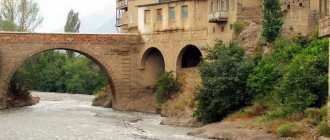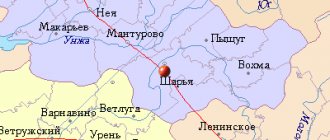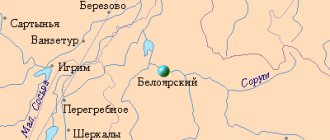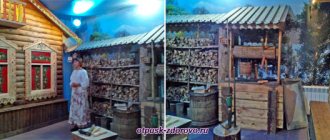City in Tula region, Russia
| Kimovsk Kimovsk | |
| City [1] | |
| Market in Kimovsk, 2005 | |
| Flag Coat of arms | |
| Location Kimovsk | |
| Kimovsk Location Kimovsk Show map of Russia Kimovsk Kimovsk (Tula region) Show map of Tula region | |
| Coordinates: 53°58'N 38°32'E / 53.967°N Latitude 38.533°E / 53.967; 38.533 Coordinates: 53°58'N 38°32'E. / 53.967°N Latitude 38.533°E / 53.967; 38,533 | |
| A country | Russia |
| Federal subject | Tula region [1] |
| Administrative region | Kimovsky district [1] |
| City of district subordination | Kimovsk [2] |
| Known since | 17th century |
| City status from | 1952 |
| Height | 210 m (690 ft) |
| population size (2010 Census) [3] | |
| • General | 28 485 |
| • Evaluate (2018) [4] | 25 951 ( -8,9% ) |
| Administrative status | |
| • Capital from | Kimovsky district [1], city of Kimovsk district jurisdiction [5] |
| Municipal status | |
| • Municipal district | Kimovsky municipal district [6] |
| • Urban village | Kimovskoye urban settlement [6] |
| • Capital from | Kimovsky municipal district [6], urban settlement Kimovsk [7] |
| Timezone | UTC+3 (MSK[8]) |
| Postal code [9] | 301720–301723 |
| Dialing code(s) | +7 48735 |
| OKTMO ID | 70626101001 |
Kimovsk
(Russian: Kimovsk) is a city and the administrative center of Kimovsky District in Tula Oblast, Russia, located on the watershed of the Don and Volga, 77 km (48 mi) southeast of Tula, the administrative center of the region. Population: 28,485 (2010 census); [3] 33,169 (2002 census); [10] 38,294 (1989 census).[11]
History[edit]
Mikhailovka village
(Mikhailovka) has been known since the 17th century.
[ citation needed
] It arose during the Great Patriotic War in connection with the intensive exploitation of coal in the Moscow coal basin.
The Soviets built numerous mines on lands on a collective farm called Young Comintern
(
Communist
and
Youth
International , abbreviated as "KIM", or
KIM )
and a habitat for miners.
It was granted the status of a workers' settlement and received its modern name in 1948; It was granted city status in 1952[ edit
]
The legacy of the Kimovans
There are 227 monuments on Kimov land, four of which are of federal significance.
According to legend, Russian soldiers who fell in the Battle of Kulikovo are buried in the village of Monastyrshchina. In 1865-1894, the distant descendants of the heroes erected the Church of the Nativity of the Virgin Mary, also called the “church on bones,” made in the Russian style, to their glory.
In Epifani on Red Square there is a church ensemble, including the St. Nicholas Cathedral of 1810-1850, a bell tower and a tower of the cathedral fence, dating back to the end of the 17th - beginning of the 18th century.
In the village of Khitrovshchina, the Epiphany Church, built in 1769, has been preserved. This village, located on the Ulybysh River, was given by Tsar Peter 1 to his favorite Franz Lefort. Later, the village was owned by General Izmailov, who became one of the prototypes of Troekurov from the story by A.S. Pushkin "Dubrovsky".
In Epifani, the Holy Dormition women's monastery of the Trinity-Sergius Lavra (former Dormition Church) has been restored.
Prominent people of the Kimovsky region
There are many historical places in the area associated with the life and work of famous people: writers, artists, scientists, public figures, military leaders. Most of them are natives of the Kimovsky district or have lived on its territory for a long time.
Barkov Alexander Sergeevich
(13.5.1873, village of Pokrovskoye, Epifansky district, Tula province - 28.12.1953, Moscow), geographer and local historian. Author of geographical anthologies and textbooks. One of the founders of geographical science, researcher of natural resources.
Bessolov Aslambek Tembolovich
(born 1912), economic figure, Hero of Socialist Labor. Working as a manager of the Krasnoarmeyskugol trust in the city of Kimovsk, he made a great contribution to the development of the Kimovsky district and the city as a mining region. One of the central streets of the city is named after Bessolov.
Vanin Kesar Tikhonovich
(1905, village of Staraya Gat, Epifansky district, Tula province (now Kimovsky district, Tula region) - 1983), Russian Soviet writer. He described his orphan's fate in stories. The author of works about the Great Patriotic War and the post-war years, used the impressions received in his native land.
Galkin Vasily Mikhailovich
(11/7/1911, village of Kulikovka Epifansky district, Tula province (now Kimovsky district, Tula region) - April 2, 1982, Shchekino, Tula region), poet, writer, journalist. He worked as a correspondent for TASS and as an employee for a number of newspapers and magazines. Wrote about Yesenin, Tvardovsky. Author of poetic books in which he glorified his native land.
Golitsyn Valerian Mikhailovich
(23.9.1803, Yaroslavl - 8.10.1859, Moscow), prince, member of the Northern Society of Decembrists, after the uprising he was exiled to Siberia. After serving 10 years as a soldier, he retired and settled with his family in Orel, and then from 1843 in the village. Arkhangelsk - Khovanshchina, Epifansky district.
Golitsyn Sergey Mikhailovich
(1909, village of Buchalki, Epifansky district (now Kimovsky district, Tula region) - 1990, Moscow), writer. He wrote about Russian history, the skill of architects and personal fate associated with an ancient noble family.
Gontsov Nikolay Andreevich
(September 23, 1931, Budyrovka village (Molodenki (now Kimovsky district, Tula region) - September 12, 1960), Soviet prose writer. Wrote about life in his native places.
Efanov Ivan Semenovich
(1924, village of Lvov (now Kimovsky district, Tula region) - May 22, 1985), economic manager, Hero of Socialist Labor. He worked in agriculture in the Kimovsky district. Participated in the Great Patriotic War. For 33 years he worked as chairman of the collective farm “Free Life”.
Kordyukov Nikolay Viktorovich
(September 6, 1961, Kimovsk - December 12, 1995, Komran district, Vietnam), military pilot, major. Participant in the war in Afghanistan. Mastered and tested the latest types of flight technology. Tragically died while returning from an air show in Malaysia.
Ksenofontova Maria Ilyinichna
(born February 4, 1919, Epifan, Tula province). Honored school teacher of the RSFSR, worked at the Epifanskaya secondary school for more than 40 years. Honorary citizen Epifani.
Kulemin Vasily Lavrentievich
(9.4.1921, village of Ovcharovka (now Kimovsky district, Tula region) - 2.12.1962, Moscow), Soviet poet. Studied at school in Epifani. Participant of the Great Patriotic War. Then he worked for the newspaper Komsomolskaya Pravda and the magazine Smena, and published several collections of poems.
Logunov Alexey Andreevich
(born March 28, 1939, Cheryomushki village, Kimovsky district, Tula region), poet, prose writer, member of the Writers' Union of Russia. He wrote about the characters, life and customs of the inhabitants of the surrounding villages of Kulikovo Field. Then he switched to fairy tale and skaz literary forms.
Malinin Mikhail Alekseevich
(born February 15, 1932, village of Stupino, Kalinin region). Since 1948 in Novomoskovsk, then in Kimovsk. He worked in a mine and on a collective farm. Since 1971, he has been the chairman of the Rossiya collective farm (now the Kudashevo agricultural production complex), which has become the best farm in the region. Awarded 2 Orders of Lenin, Order of the Red Banner of Labor. Honored Worker of Agriculture of the RSFSR. Honorary citizen of Kimovsk.
Melikhov Nikolay Filippovich
(born May 16, 1928, Besedinskaya village, Kursk region), miner, Hero of Socialist Labor. In Kimovsk, since 1946, Melikhov’s brigade carried out rapid excavation. She was the first to use metal support. Full holder of the Miner's Glory medal. Honorary miner and Honorary citizen of the city of Kimovsk.
Nemtsov Vladimir Ivanovich
(born August 28, 1907, Epifan (now Kimovsky district, Tula region), writer. In addition to science fiction works, he wrote articles and books on the problems of youth education.
Nechaev Stepan Dmitrievich
(1792-1860), director of the school in the Tula province, writer, senator, landowner of the Epifansky district. Member of the Union of Welfare. Initiator of the creation of the monument on the Kulikovo Field.
Obrynba Nikolai Ippolitovich
(born 1913, Epifan (now Kimovsky district, Tula region), Honored Artist of the RSFSR, painter, graphic artist.
Raevsky Ivan Artemyevich
(March 10, 1815, St. Petersburg - April 20, 1869, Nikitskoye village, Epifansky district, Tula province), landowner, member of the circle of Tula landowners who prepared a project for the liberation of peasants. In 1831-1863 world mediator of Epifansky district.
Raevsky Ivan Ivanovich
(1835, the village of Nikitskoye, Epifansky district, Tula province - 1891, the village of Begichevka Donskoy, Ryazan province), justice of the peace of the Epifansky district, zemstvo figure. Participant of active economic endeavors in the village. Nikitsky opened a school for peasant children and set up free canteens for starving peasants.
Raevskaya Ekaterina Ivanovna
(1817-1900), artist, memoirist, wife of I.A. Raevsky. The author of memoirs painting a picture of the life and everyday life of the Tula nobles of the 19th century.
Raevskaya Elena Pavlovna
(1840, Moscow-1907), Tula landowner, wife of I.I. Raevsky. Together with L.N. Tolstoy provided assistance to peasants who suffered from crop failure. She opened canteens and shelters.
Raevsky Petr Ivanovich
(1873, the village of Nikitskoye, Epifansky district - August 28, 1920, the village of Baryatino Bogoroditsky district, Tula province), doctor, public figure, son of I.I. Raevsky. Creator of medical institutions in Epifansky district.
Salikhov Alexander Yakovlevich
(1895, Epifansky district, Tula province - October 2, 1984, Kimovsk, Tula region), Hero of Socialist Labor (1949). Organizer of collective farm construction in Kimovsky district. Chairman of the collective farm “New Path” in the village. Krasnopolye.
Sladkov Ivan Davidovich
(March 18, 1890, village of Molodenki Epifansky district, Tula province - June 5, 1922, Sevastopol), revolutionary and military leader, first commissar of the Naval Forces of the RSFSR (1921).
Uspensky Gleb Ivanovich
(October 13, 1843, Tula - March 24, 1902, St. Petersburg), Russian writer. From September 1867 to January 1868 he taught in Epifani, where, based on life observations, he wrote the essay “Through the Sleeves” (from provincial notes).
Fedorov Vasily Mikhailovich
(1st quarter of the 19th century), Epiphanian landowner, poet and playwright. He served in the civil department in Moscow, then in St. Petersburg. He wrote plays for the theater.
Chumakov Mikhail Petrovich
(born November 1, 1909, Ivanovka village, Oryol region), virologist and microbiologist, academician, State Prize laureate, Hero of Socialist Labor. I spent my childhood and youth in Epifani. Constantly kept in touch with Epifan. He provided enormous assistance in the construction of a new hospital, which is named in his honor.
Links[edit]
Sources [edit]
- ^ abcde Law No. 954-ZTO
- ^ ab Law No. 954-ZTO defines a city of regional subordination as a city that is part of one of the districts of the region. OKATO classifies the city of Kimovsk as part of the Kimovsky district and separately from other administrative units of the district.
- ^ a b Federal State Statistics Service (2011). “All-Russian Population Census 2010. Volume 1" [All-Russian Population Census 2010, vol. 1]. All-Russian Population Census 2010 [All-Russian Population Census 2010]
. Federal State Statistics Service. - "26. The size of the permanent population of the Russian Federation by municipalities as of January 1, 2022". Federal State Statistics Service. Retrieved January 23, 2022.
- State Committee of the Russian Federation on Statistics. Committee of the Russian Federation for Standardization, Metrology and Certification. No. OK 019-95 January 1, 1997 “All-Russian classifier of objects of administrative-territorial division. Code 70 226 501”, ed. changes No. 278 / 2015 dated January 1, 2016. (Goskomstat of the Russian Federation. Committee of the Russian Federation for Standardization, Metrology and Certification. No. OK 019-95 January 1, 1997. Russian classification of administrative divisions) (OKATO).
Code 70 226 501 , as amended by Amendment No. 278/2015 of January 1, 2016). - ^ abcd Law No. 547-ZTO
- Federal State Statistics Service. Federal Agency for Technological Regulation and Metrology. No. OK 033-2013 January 1, 2014 “All-Russian classifier of municipal territories. Code 70 626 101 ". (Federal State Statistics Service. Federal Agency for Technological Regulation and Metrology. No. OK 033-2013 dated January 1, 2014. Russian classification of municipal territories. Code 70 626 101.
). - "On the Calculation of Time". Official Internet portal of legal information
. June 3, 2011. Retrieved January 19, 2022. - Post office. Information and computing center of OASU RPO. ( Post office
).
Search for postal service objects ( postal Search for objects
) (in Russian) - ↑
Federal State Statistics Service of Russia (May 21, 2004).
“The population of Russia, the constituent entities of the Russian Federation as part of federal districts, urban settlements, settlements, settlements of 3 thousand or more people” [Population of Russia, its federal districts, federal districts, districts, urban settlements, rural settlements - administrative centers and rural settlements with a population of more than 3,000 people] (XLS). All-Russian Population Census 2002
. - “All-Union Population Census of 1989. The current population of union and autonomous republics, autonomous regions and districts, territories, negative phenomena, urban settlements and rural district centers” [All-Union Population Census of 1989: current population of union and autonomous republics, Autonomous regions and districts , territories, regions, districts, urban settlements and villages performing the functions of district administrative centers. All-Union Population Census of 1989 [All-Union Population Census of 1989]
.
Institute of Demography of the National Research University: Higher School of Economics [Institute of Demography of the National Research University: Higher School of Economics]. 1989 - via Demoscope Weekly
.
Notes[edit]
- Tula Regional Duma. Law No. 954-ZTO of December 27, 2007 “On the administrative-territorial structure of the Tula region,” as amended. Law No. 2131-ZTO of June 11, 2014 “On Amendments to the Law of the Tula Region” On the Administrative-Territorial Structure of the Tula Region “. Came into force ten days after official publication. Published: “Bulletin of the Tula Regional Duma”, No. 11–12 (142–143), part 4, November – December 2007 (Tula Regional Duma. Law of December 27, 2007 No. 954-ZTO “ On the administrative-territorial structure ").
Tula region as amended by Law dated June 11, 2014 No. 2131-ZTO.
On amendments to the Law of the Tula Region “On the administrative-territorial structure of the Tula Region” and to the Law of the Tula Region “On establishing the boundaries of administrative-territorial units - districts in the city of Tula”
. Valid from the day that occurs ten days after the official date of publication.). - Tula Regional Duma. Law No. 547-ZTO of March 11, 2005 “On the renaming of the municipal entity - the city of Kimovsk and the Kimovsky district of the Tula region, establishing boundaries, granting the status of determining the administrative centers of municipal entities in the territory of the Kimovsky district of the Tula region,” as amended. Law No. 1898-ZTO of April 1, 2013 “On the transformation of municipalities in the territory of the Kimovsky district of the Tula region and on amendments to the Law of the Tula region” On the renaming of the municipal formation - the city of Kimovsk and the Kimovsky district of the Tula region, establishing boundaries, conferring status and determination of the administrative centers of the municipality on the territory of Kimovsky, Tula region "". Came into force ten days after official publication. Published: “(Tula Regional Duma. Law of March 11, 2005 No. 547-ZTO “ On the renaming of the municipal formation of the city of Kimovsk and the Kimovsky district of the Tula region, on the establishment of boundaries, assignment of status and the creation of administrative centers of municipal formations in the territory of the Kimovsky district of the Tula region
as amended by Law No. 1898-ZTO of April 1, 2013 “
On the transformation of municipalities in the territory of the Kimovsky district of the Tula region and on amendments to the Law of the Tula region “On the renaming of a municipal entity.” Formation of the city of Kimovsk and the Kimovsky district of the Tula region on the establishment of boundaries , assignment of status and creation of administrative centers of municipalities on the territory of the Kimovsky district of the Tula region "
. Valid from the day that occurs ten days after the official publication.).
Coat of arms
The coat of arms was approved by the decision of the Assembly of Deputies of the municipal formation of the city of Kimovsk, Kimovsky district, dated September 28, 2007 No. 32-127 and entered into the State Heraldic Register of the Russian Federation under No. 3601.
Rationale for the symbolism of the coat of arms of the municipality of the city of Kimovsk, Kimovsky district:
City coat of arms, used until 2007
• The dove is a symbol of peace and tranquility and symbolizes one of the favorite leisure activities of local residents - pigeon breeding.
• The name of the city - Kimovsk (since December 31, 1930) - is associated with the Communist Youth International (KIM), which is reflected in the coat of arms in red, making the coat of arms “semi-vocal”.
• Red color is a symbol of courage, strength, labor, beauty and life.
• Black Mountain shows the hilly terrain of the area and the fact that the development of the city in the 20th century is largely associated with coal mining. When Donbass was captured and put out of action in the first year of the war, they relied on Mosbass. Since 1943, active coal mining began, the Kimovsky coal mine with a processing plant came into operation.
• Black color in heraldry symbolizes wisdom, modesty, honesty and the eternity of existence.
• Gold is a symbol of wealth, stability, respect and warmth of life.
• Silver is a symbol of purity, perfection, peace and understanding.
External links [edit]
- Unofficial site of Kimovsk (in Russian)
- News portal Kimovsk (in Russia)
- Encyclopedia "My City". Entry into Kimovsk (in Russian)
| vteAdministrative divisions in the Tula region | |||
| Administrative center: Tula • Rural area. | |||
| Administrative regions |
| ||
| Cities and towns |
| ||
| Urban settlements |
| ||








